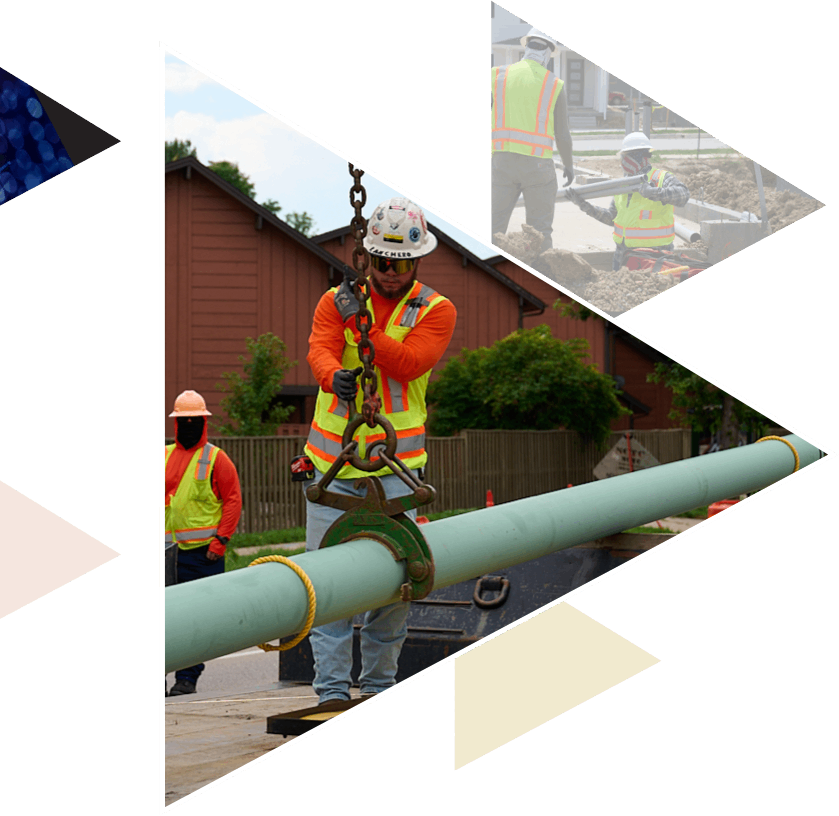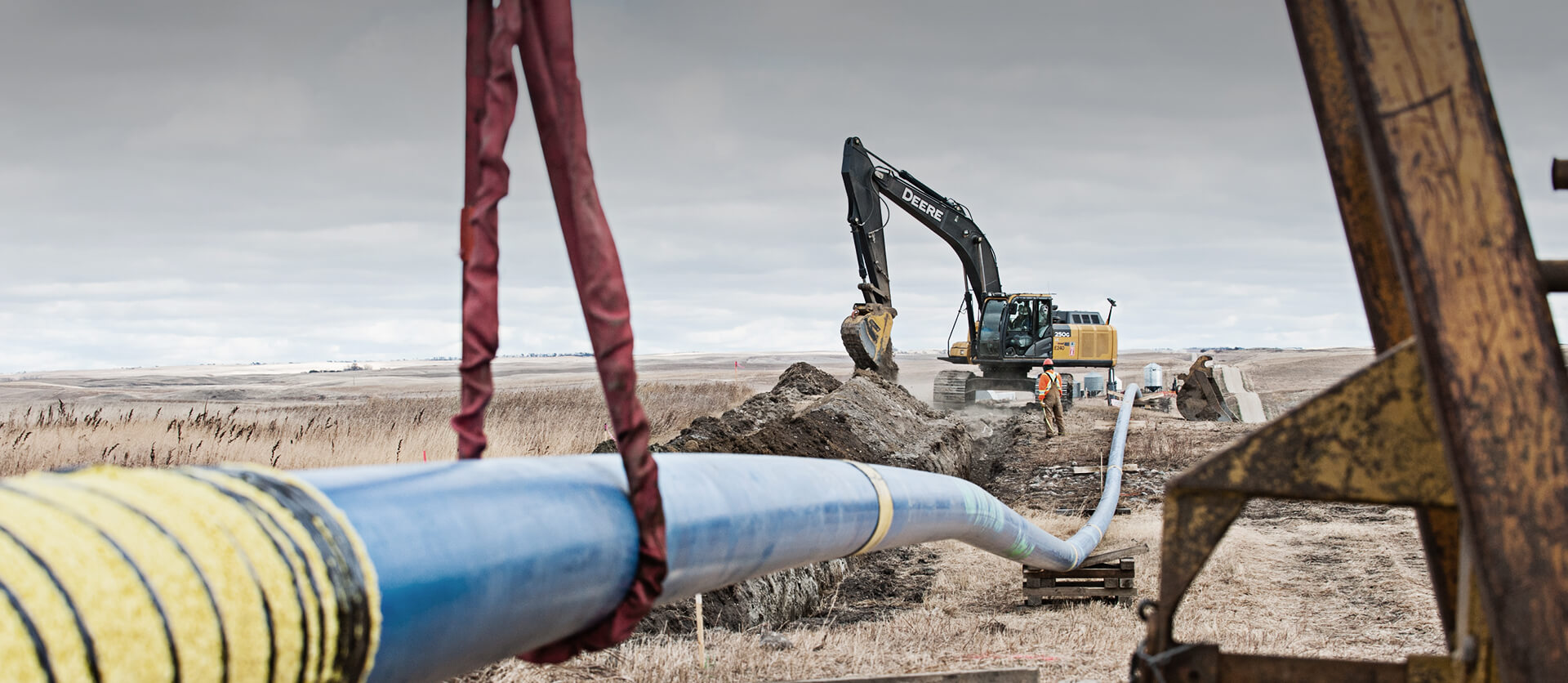Exploring the current Advancements in Pipeline Construction Providers for Modern Projects
The Pipeline Construction industry is undergoing significant adjustments. Innovations such as smart products and robotics are reshaping typical methods. These developments promise to boost performance and safety and security. Furthermore, AI modern technologies are enhancing project administration capacities. As these aspects merge, they elevate concerns concerning their lasting effect on sustainability and price. Recognizing these technologies is crucial for stakeholders looking to navigate this progressing landscape. What ramifications do they hold for future jobs?
The Increase of Smart Products in Pipeline Construction
As the demand for a lot more efficient and sustainable Pipeline systems boosts, the assimilation of clever products has actually emerged as a transformative remedy in Pipeline Construction. These innovative materials have distinct residential or commercial properties that enhance the efficiency and durability of pipes. Self-healing polymers can immediately fix small leakages, considerably lowering upkeep expenses and downtime. Furthermore, products installed with sensors can check architectural honesty and environmental problems, enabling real-time information collection and analysis.
Smart products are corrosion-resistant and commonly light-weight, which not only simplifies setup however additionally expands the lifespan of the systems. Their versatility makes it possible for pipelines to endure severe ecological conditions, promoting safety and reliability. As industries significantly prioritize sustainability, using green wise materials adds to lowered ecological impact. Overall, the rise of clever products marks a remarkable shift in Pipeline Construction, leading the way for ingenious options to fulfill contemporary framework requirements.
Advancements in Robotics for Installation and Upkeep
The integration of wise products in Pipeline Construction is complemented by developments in robotics, which are revolutionizing installation and upkeep processes. Robotic technologies, such as automated welding systems and drones, enhance efficiency and accuracy, minimizing human error and minimizing safety dangers. These robotics can operate in tough environments, guaranteeing that setups are carried out in remote or harmful locations without putting employees at threat.
Additionally, robotic evaluation devices outfitted with innovative sensing units supply real-time data on Pipeline stability, enabling proactive maintenance. They can detect leaks or architectural weaknesses, allowing timely treatments that expand the life-span of Pipeline systems. Using robotics not only speeds up the Construction timeline yet likewise enhances source allotment, resulting in set you back financial savings. As these technologies proceed to progress, they are readied to play a critical duty fit the future of Pipeline Construction, making sure reliability and sustainability in framework advancement.
AI-Driven Job Management Equipment Changing Workflow
AI-driven task management tools are reshaping operations in Pipeline Construction by enhancing decision-making procedures through enhanced access to real-time data analytics. These devices enable teams to react quickly to task advancements, thus raising efficiency. In addition, streamlined interaction networks foster collaboration among stakeholders, better optimizing job outcomes.
Improved Decision-Making Procedures

Real-Time Data Analytics
Taking advantage of real-time data analytics, modern task monitoring devices revolutionize workflow in Pipeline Construction. These advanced tools take advantage of fabricated knowledge to offer rapid insights into job performance, source allowance, and prospective threats. By continually checking key performance indications, teams can promptly adjust to altering problems, maximizing labor and products usage. The integration of real-time information permits even more educated decision-making, lowering hold-ups and reducing expenses. Additionally, predictive analytics can recognize patterns and forecast challenges before they escalate, improving overall project effectiveness. Therefore, Pipeline Construction business that embrace these AI-driven devices can enhance project timelines and end results, guaranteeing they remain competitive in a progressively intricate market landscape. This advancement marks a substantial change toward data-centric management techniques.
Streamlined Communication Networks
Reliable interaction is vital in Pipeline Construction, where various stakeholders need to work together flawlessly to assure job success. The intro of AI-driven job monitoring devices has changed interaction channels within the market. These devices assist in real-time information sharing, permitting teams to access updates, share documents, and track progress effectively. By automating routine jobs and providing a centralized platform for communication, these developments get rid of misunderstandings and decrease hold-ups. Boosted presence right into task timelines and resource allowance promotes liability amongst staff member. Furthermore, AI analytics can identify possible interaction gaps, ensuring proactive problem-solving. Inevitably, structured communication networks not only enhance process however additionally elevate general job efficiency, enabling Pipeline Construction companies to meet contemporary demands successfully.
Boosted Safety And Security Procedures Through Modern Technology Combination
The integration of innovation in Pipeline Construction has actually caused enhanced safety methods. Real-time monitoring systems, wearable security tools, and automated danger analyses are currently crucial elements in lessening hazards on job websites. These advancements not only boost employee safety yet likewise enhance conformity with industry regulations.
Real-Time Tracking Systems
Exactly how can real-time tracking systems transform Pipeline Construction safety procedures? By incorporating sophisticated technology, these systems supply continuous surveillance of Construction tasks, guaranteeing immediate discovery of potential hazards. Sensing units and cameras can keep an eye on ecological problems, equipment performance, and labor force activities, providing vital data in genuine time. This positive strategy enables job supervisors to recognize risks before they escalate, significantly enhancing precaution on-site. On top of that, real-time surveillance assists in compliance with regulative requirements, making certain that safety and security criteria are fulfilled constantly. The ability to examine data immediately sustains educated decision-making, making it possible for timely treatments. As an outcome, Pipeline Construction tasks can operate extra effectively while guarding the wellness of employees and minimizing accidents, consequently revolutionizing the industry's security landscape.
Wearable Security Tools
Frequently, wearable safety tools are being incorporated right into Pipeline Construction to boost safety methods. These cutting-edge devices, including wise helmets, vests, and wristbands, are designed to keep an eye on employee wellness and ecological conditions in real-time. Equipped with sensors, these gadgets can spot threats such as poisonous gas exposure, extreme heat, or high sound levels, giving immediate signals to managers and workers. In addition, wearable modern technology usually consists of GPS monitoring features, allowing for effective place surveillance of personnel on-site. This capacity not only help in quick response during emergency situations but likewise boosts general task administration. By focusing on employee security via innovation assimilation, Pipeline Construction business are making substantial strides in reducing accidents and advertising a culture of safety and security within the market.

Automated Risk Analyses
While conventional risk evaluations usually count on manual analyses, the assimilation of computerized threat evaluation technologies is transforming security methods in Pipeline Construction. These sophisticated systems take advantage of information analytics, man-made intelligence, and artificial intelligence to recognize prospective dangers more precisely and successfully. By constantly monitoring environmental conditions, devices status, and employee habits, automated analyses give real-time understandings that improve decision-making. This positive strategy reduces the likelihood of accidents and enhances compliance with safety and security guidelines. Additionally, automated risk evaluations can be upgraded instantaneously, guaranteeing that all stakeholders have access to the most recent information. As a result, Pipeline Construction tasks gain from a safer job setting, reducing disturbances and promoting a culture of safety via technology assimilation.
Lasting Practices in Pipeline Construction
As the need for power facilities rises, the Pipeline Construction industry significantly focuses on lasting practices that lessen environmental impact. Firms are taking on green materials and innovative Construction strategies to minimize their carbon impact. As an example, the usage of trenchless innovation permits Pipeline installation with marginal disruption to the surrounding atmosphere, minimizing and maintaining all-natural habitats dirt disintegration.
Additionally, the execution of eco-friendly energy sources, such as solar or wind, to power Construction activities is getting grip. This change not only lowers dependence on fossil fuels yet additionally improves the general sustainability of Pipeline projects. Moreover, efficient waste administration methods, including recycling and recycling materials, are ending up being standard in the market.
Real-Time Monitoring and Predictive Maintenance Solutions
The change towards sustainable techniques in Pipeline Construction has actually paved the method for the assimilation of real-time tracking and predictive upkeep options. These innovations leverage advanced information use this link and sensing units analytics to constantly analyze Pipeline integrity and operational efficiency. By gathering data in actual time, drivers can find anomalies such as leaks or pressure declines before they escalate into severe issues. This proactive method not just minimizes environmental threats but additionally lowers downtime and upkeep expenses.
Anticipating maintenance utilizes algorithms to forecast possible failures based on historical data and current performance metrics. This enables timely interventions, optimizing upkeep timetables and source allotment. In general, helpful resources real-time tracking and predictive upkeep services represent a considerable development in Pipeline Construction, boosting safety and security and dependability while sustaining sustainability goals. As sectors proceed to accept these advancements, the operational landscape of Pipeline management is set to develop substantially, making certain lasting viability and effectiveness.
The Duty of Drones in Evaluating and Inspection
Drones have become transformative devices in the checking and examination of pipelines, supplying improved effectiveness and precision. Their capacity to record high-resolution pictures and videos from numerous angles enables extensive assessments of Pipeline integrity without running the risk of human safety. Outfitted with advanced sensing units and thermal imaging abilities, drones can spot leaks, corrosion, and structural anomalies that may not be visible to the naked eye.
In addition, the release of drones greatly decreases inspection time, enabling quicker decision-making for upkeep and repairs. This efficiency equates to cost financial savings and marginal disruption to bordering environments. Drones can likewise access hard-to-reach locations, such as rugged surfaces or raised structures, further expanding the range of inspections.
As the Pipeline industry proceeds to embrace technological advancements, the combination of drones right into surveying and inspection processes is expected to grow, establishing new requirements for functional excellence and safety in Pipeline Construction solutions.
Frequently Asked Questions
What Are the Expenses Connected With Modern Pipeline Construction Innovations?
The costs linked with modern-day Pipeline Construction innovations often include sophisticated materials, specialized labor, and cutting-edge technology. These elements add to higher preliminary investment, yet can cause long-lasting financial savings via enhanced effectiveness and reduced maintenance needs.
Exactly How Do Regulative Changes Impact Pipeline Construction Technologies?
Regulatory modifications significantly impact Pipeline Construction modern technologies by demanding the adoption of safer, a lot more effective techniques. Conformity needs commonly drive technology, causing improvements in products, style, and Construction methods that boost overall task sustainability and safety and security.
What Abilities Are Needed for Jobs in Advanced Pipeline Construction?

Jobs in sophisticated Pipeline Construction call for knowledge in design principles, job administration, safety and security methods, and ecological regulations. Additionally, abilities in modern technology assimilation, synergy, and analytic are crucial for traversing the intricacies of modern-day facilities tasks.
Just How Can Companies Make Certain Compliance With Environmental Standards?
To assure conformity with ecological criteria, business should apply strenuous training programs, conduct regular audits, and embrace finest methods in sustainability. Involving with stakeholders and keeping track of governing changes better reinforces their commitment to environmental stewardship.

What Are the Trick Challenges Facing Pipeline Construction Today?
The key obstacles facing Pipeline Construction today consist of regulative compliance, ecological worries, fluctuating product costs, labor shortages, and the need for sophisticated modern technology integration (Pipeline Construction Services). These factors make complex task timelines and general efficiency in the market
As the need for extra effective and lasting Pipeline systems enhances, the combination of clever products has actually arised as a transformative service in Pipeline Construction. AI-driven project monitoring tools are reshaping workflows in Pipeline Construction by enhancing decision-making procedures through better accessibility to real-time information analytics. While project monitoring in Pipeline Construction has traditionally counted on hands-on processes, the assimilation of sophisticated devices significantly boosts decision-making capacities. Taking advantage of real-time information analytics, modern job administration devices transform workflow This Site in Pipeline Construction. Jobs in advanced Pipeline Construction require know-how in design principles, job monitoring, security procedures, and environmental laws.